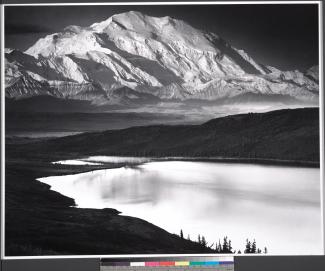
Early Works
-
Jump to...
About the Exhibition
This exhibition focuses on the masterful small-scale prints made by Ansel Adams from the 1920s into the 1950s. During this time period, there is an evolution in his printing style from the soft-focus, warm-toned, painterly Parmelian Prints of the High Sierras of the 1920s through the Group f/64 school of sharp-focused photography that he co-founded with Edward Weston and Imogen Cunningham in the 1930s. And later, after the war, Adams moves toward a cooler, higher-contrast printmaking style. Throughout, Adams is revealed as a poet of light, both in the field and in the darkroom.
Ansel Adams: Early Works is organized by art2art Circulating Exhibitions, LLC. All photographs are from the private collection of Michael Mattis and Judith Hochberg.
About the Artist
Ansel Adams (1902-1984), photographer, musician, naturalist, explorer, critic and teacher, was a giant in the field of landscape photography. His work can be viewed as the end of an arc of American art concerned with capturing the “sublime” in the unspoiled western landscape. This tradition includes the 19th-century painters Albert Bierstadt, Thomas Cole and Thomas Moran, and the 19th-century photographers Carleton Watkins, Timothy O’Sullivan and William Henry Jackson.
For much of his early adulthood, Adams was torn between a career as a concert pianist versus one in photography. He famously likened the photographic negative to a musical score and the print to the performance. Most museum-goers are only familiar with the heroic, high-contrast prints on high-gloss paper stock that Adams manufactured to order in the 1970s-80s, coinciding with the emergence of the first retail galleries devoted to photography. As performances, these later prints are akin to “brass bands.” Much lesser known are his intimate prints, rich in middle tones – the “chamber music” – that Adams crafted earlier in his career.